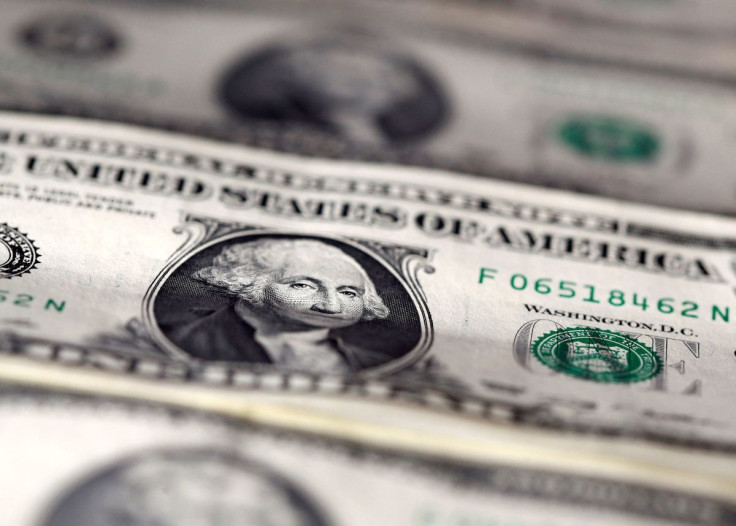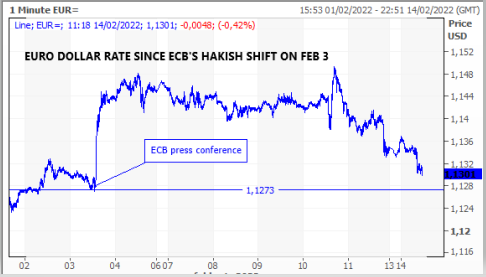Dollar Hits Two-week High On Tensions Over Ukraine

The dollar rose on Monday along with the yen and the Swiss franc as investors rushed into safe-haven assets amid fears that Russia is preparing to invade Ukraine.
The move came a day after the United States said Russia could attack Ukraine at any time. Russia has denied having any such plans though a senior official said it was ready to fire on foreign ships and submarines that illegally enter its waters.
The dollar index rose 0.4% to 96.351, its highest since Feb. 1, at 1133 GMT.
Euro-dollar one-month implied volatility was at 7.45%, the highest since November 2020, from below 6% at the end of January.
The rouble was flat at 77.08 against the dollar, after tumbling to its lowest since Jan. 28 on Friday as investors ditched Russian assets.
"European dependency on Russian energy makes the cyclical economic performance of the euro zone particularly vulnerable in case of an escalation of the conflict in Ukraine," Commerzbank analysts said.
The euro was down 0.4% at $1.1301, its lowest level since Feb. 3.
The euro weakened on Friday when a rush into safe-haven assets overshadowed expectations for monetary policy tightening from the European Central Bank.
ECB president Christine Lagarde had also dampened some of the bullish euro sentiment by reiterating that any policy action will be gradual.
(Graphic:

)
The U.S. Federal Reserve will release its January meeting minutes on Wednesday, but analysts said central bank action was unlikely to return to the spotlight until the risk of an escalation over Ukraine recedes.
The rush into safe-haven assets has boosted the Japanese yen since Friday, while the Bank of Japan successfully defended its key bond yield target on Monday, holding the line on its ultra-loose monetary policy.
The yen strengthened 0.3% to 115.16 against the dollar, and 0.6% versus the euro.
"These two currencies (the U.S. dollar and the yen) - as well as the Swiss franc - should remain bid until, and if, we get indications that a diplomatic solution is in sight," ING analysts said, adding that "markets are adopting a wait-and-see approach on geopolitics at the start of the new week."
We "flag quite significant downside risks for exposed currencies - directly the rouble and indirectly all pro-cyclical currencies and especially the European ones - should tension escalate further," ING added.
The Swiss franc rose 0.5% against the euro to 1.0451, its highest since Feb. 3.
Riskier currencies such as Australian and New Zealand dollars fell 0.6% and 0.9% respectively.
The Swedish crown fell 1% versus the greenback to $9.4212, its lowest level since January 28.
A divided central bank in Sweden kept policy plans broadly unchanged on Thursday, pouring cold water on expectations of monetary tightening.
The Norwegian crown, which is sensitive to oil prices, fell 0.8% against the dollar to 8.9511, its weakest level since the end of January, while Brent crude futures steadied after hitting their highest since October 2014.
In cryptocurrencies, bitcoin was down 0.8% at around $42,220.
© Copyright Thomson Reuters 2024. All rights reserved.




















